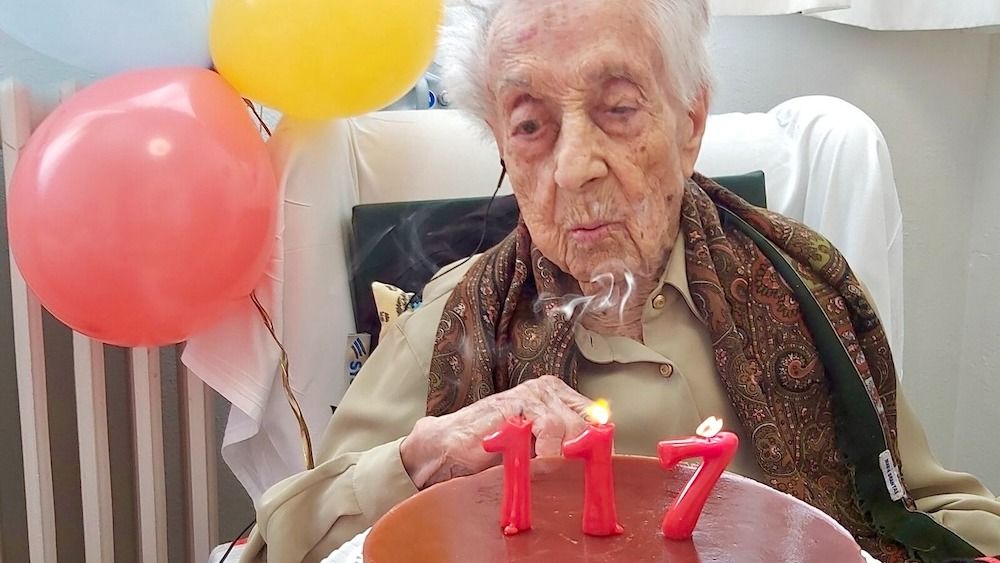Follow us on Google News (click on ☆)
Researchers analyzed biological samples from Branyas, revealing potential protective factors against diseases. Among them were genes linked to immune function, excellent cholesterol levels, and a gut microbiome rich in anti-inflammatory bacteria.

Maria Branyas Morera on her 117th birthday on March 4, 2024.
Credit: Arxiu de la família Branyas Morera, (CC0 1.0 UNIVERSAL Deed), via Wikimedia Commons
The study, published on bioRxiv, has not yet been peer-reviewed. It compares Branyas' biological results to those of younger women, identifying seven rare genetic variants that could explain her longevity.
These variants, associated with enhanced cognitive and immune functions, as well as improved mitochondrial function, suggest protection against several diseases. Additionally, Branyas' gut microbiome was dominated by beneficial bacteria, likely due to her yogurt-rich diet.
An intriguing discovery concerns Branyas' molecular age, which appeared younger than her chronological age. Despite very short telomeres, typical of her advanced age, her DNA methylation markers suggested a younger physiological age.
This study opens perspectives for understanding the mechanisms of longevity and considering interventions to extend healthy life. However, validating the age of some supercentenarians remains complicated, with doubts about the accuracy of historical records.

Maria Branyas Morera as a child (in white), with her family in New Orleans in 1911.
Credit: Unknown author, public domain, via Wikimedia Commons
Despite these uncertainties, Branyas' biology offers valuable clues for distinguishing changes associated with healthy aging from those linked to diseases. Her biological markers could thus guide future research on aging.
What is DNA methylation?
DNA methylation is a biochemical process where methyl groups are added to DNA, influencing gene expression. This mechanism plays a crucial role in development, cell differentiation, and aging.
With age, methylation patterns change, which can serve as a "biological clock" to estimate a person's physiological age. These changes are studied to understand how they affect health and longevity.
Methylation can be influenced by environmental factors, such as diet and stress, as well as genetic factors. It is also implicated in diseases like cancer, where tumor suppressor genes can be deactivated by excessive methylation.
Research on DNA methylation opens perspectives for developing therapies aimed at reversing or slowing the effects of aging by specifically targeting epigenetic modifications.
How do telomeres influence aging?
Telomeres are structures located at the ends of chromosomes, protecting DNA from degradation. With each cell division, telomeres shorten, a process associated with cellular aging.
Telomere shortening is considered a marker of biological aging. When telomeres become too short, cells enter senescence or die, contributing to the aging of the organism.
Factors like oxidative stress and inflammation can accelerate telomere shortening. Conversely, a healthy lifestyle, including a balanced diet and exercise, can slow this process.
Research on telomeres aims to understand how to preserve their length to delay aging and prevent age-related diseases. Enzymes like telomerase, which can lengthen telomeres, are being studied for their therapeutic potential.